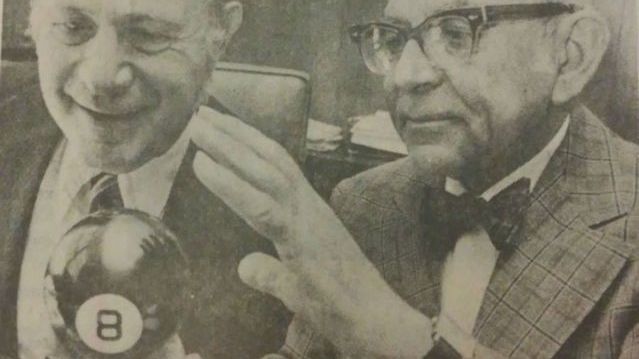History of the Magic 8 Ball: From Fortune-Telling Device to Pop Culture Icon

History of the Magic 8 Ball
The Magic 8 Ball is more than a novelty—it’s a cultural icon with a rich history that spans nearly a century. From its spiritualist roots in the 1940s to its transformation into a bestselling toy, the Magic 8 Ball’s journey is as mysterious as the answers it provides. Here’s the true story behind this timeless fortune-telling device.
Origins of the Magic 8 Ball: The Syco-Seer (Early 1940s)
The story begins with Albert C. Carter, a Cincinnati-based inventor inspired by his mother, Mary Carter, a self-proclaimed clairvoyant. She used a “spirit writing” or “psychic writing” device to communicate with the beyond. Drawing from this, Carter developed a fortune-telling invention called the Syco-Seer, a cylindrical device filled with dark liquid and a floating answer window that responded to yes-or-no questions.

In 1944, Carter applied for a patent for the Syco-Seer (U.S. Patent No. 2,453,616, issued in 1948). Sadly, Carter passed away before he could fully commercialize the product. His business partner, Abe Bookman, co-founder of Alabe Crafts, took over the concept.
Reinventing the Device: From Tube to Billiard Ball (1950-1957)
Bookman began marketing the Syco-Seer under various names, including the Syco-Slate and the Crystal Ball, throughout the late 1940s. One version, the Syco-Slate, The Pocket Fortune Teller, was marketed as a novelty for adults.

The breakthrough came in 1950, when Alabe Crafts was commissioned to create a promotional item for Brunswick Billiards, a company known for pool tables. They requested a fortune-telling novelty in the shape of an 8-ball, linking the mystique of prediction with the pool hall motif.
Thus, in 1950, the first recognizable Magic 8 Ball—a black plastic sphere with a window revealing randomized answers on a floating 20-sided die—was born. Its sleek design and interactive nature quickly set it apart from other novelty items.

Abe Bookman (right) with Alabe Craft’s president and sales manager Sid Korey in 1973, Photograph by Jack Klumpe
The Rise of a Pop Culture Icon (1957-1990s)
Though the product debuted in 1950, it wasn’t until 1957 that the Magic 8 Ball was officially trademarked. In the following decades, it grew steadily in popularity, appearing on toy store shelves across America.
- 1960s–1970s – The Magic 8 Ball became a widely known novelty toy, especially popular among teenagers.
- 1980s–1990s – The Magic 8 Ball exploded in pop culture. It appeared in movies like The Big Lebowski (1998) and Toy Story (1995), as well as on television and in advertising. It also became a staple gag item at gift shops and office desks.
During this time, the rights to the Magic 8 Ball changed hands. Ideal Toy Company distributed it in the early years, followed by Tyco Toys, and eventually Mattel, which acquired Tyco in 1997. Mattel brought the Magic 8 Ball to a global audience and ensured its continued production into the digital era.
Digital Era and Continued Popularity (2000s-Today)
The Magic 8 Ball has proven its staying power well into the 21st century. Mattel continues to manufacture the classic version, and new generations have discovered it through:
- Mobile apps and online versions
- Appearances in memes, video games, and social media
- Updated variants with humorous or themed responses
Despite the rise of digital tools, the physical Magic 8 Ball remains a best-seller in the novelty toy category. Its appeal lies in its simplicity—shake, wait, and get an answer that feels both random and profound.
Key Takeaways: Magic 8 Ball Historical Timeline
- 🧠 1944 – Albert Carter patents the Syco-Seer, inspired by his clairvoyant mother.
- ⚰️ Late 1940s – Carter passes away; Abe Bookman continues development through Alabe Crafts.
- 🎱 1950 – Brunswick Billiards commissions a billiard-themed version; the first Magic 8 Ball is created.
- ™️ 1957 – The Magic 8 Ball trademark is filed and officially branded.
- 🧸 1997 – Mattel acquires Tyco and the Magic 8 Ball brand.
- 📱 2000s–Present – The Magic 8 Ball expands into digital platforms but remains a best-selling physical toy.
Final Thoughts
The Magic 8 Ball is more than a toy—it's a lasting symbol of curiosity and pop culture charm. From its roots in spiritualism to its reinvention as a playful oracle, it’s become a mainstay across generations. Whether you're looking for guidance or just a little fun, one thing remains true: the Magic 8 Ball always has an answer.

